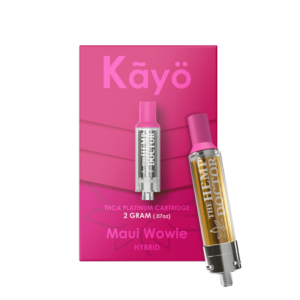The cannabis industry is booming, with dispensaries popping up in various states across the U.S. Particularly for new investors and entrepreneurs, the question ‘How much do dispensaries make?’ is both common and crucial. In this article, we delve into the financial landscape of dispensaries, examining revenue streams, costs, and the factors influencing profitability. Whether you’re considering starting your own dispensary or are just curious about the industry, this breakdown will provide a clearer picture.
Dispensary Earnings: An Overview
Dispensaries, depending on their size and location, can have varying levels of income. On average, most dispensaries report annual earnings ranging from $500,000 to over $5 million. The stark difference largely stems from factors such as geographical location and customer base size. For instance, dispensaries in states like Rhode Island can see revenues as high as nearly $17 million per store, showcasing the impact of market dynamics and state regulations on income levels.
The potential earnings of a dispensary are not just about the sales figures. Market maturity plays a pivotal role as well. States where cannabis use has been legalized more recently often experience rapid changes in dispensary income patterns. For instance, states like New York have recently opened their market to adult-use sales, and weekly sales have been climbing continuously in 2024. This indicates that early entrants into newly legalized markets could potentially capture higher revenues compared to more saturated and mature markets.
Revenue Streams for Dispensaries
Dispensaries make money primarily through the sale of cannabis products, including flowers, edibles, tinctures, and concentrates. Additionally, some dispensaries diversify their income by offering membership programs, hosting events, or even selling branded merchandise. Some entrepreneurial owners have expanded their operations to include online sales, thereby tapping into a broader customer base even across state lines where permitted.
An often overlooked revenue stream is the sale of cannabis-related accessories. Items such as vaporizers, rolling papers, and branded apparel can significantly boost a dispensary’s income. Offering diverse products not only enriches the customer experience but also encourages higher spending per visit. As the cannabis retail market continues to thrive, dispensaries are strategically adopting new trends, such as home delivery services which have become increasingly popular in the era of e-commerce.
Key Factors Influencing Profitability
Several factors influence how much a dispensary can make. These include location and legal regulations, the quality and diversity of products offered, customer demographics, competitive landscape, and operational efficiency. For instance, states with favorable regulatory environments and lower taxes typically provide more profitable conditions for dispensary operations. Moreover, understanding local market demand and maintaining a unique product offering can help dispensaries stand out in a competitive landscape.
The regulatory framework is a significant determinant of profitability. States like California have established a relatively stable market environment, whereas newer markets may face frequent regulatory adjustments. This necessitates operational agility. Dispensary owners need to be aware of changes in regulations that may affect their business operations and costs. Moreover, high taxes and licensing fees can eat into profits, highlighting the importance of financial planning and regulatory compliance for sustainable growth.
Costs and Challenges in the Dispensary Business
Running a dispensary involves significant costs, including licensing fees, regulatory compliance, security measures, staff salaries, and product procurement. These expenses can greatly impact profitability if not carefully managed. Licensing alone can demand an investment of up to $100,000 and beyond, highlighting the financial hurdle just to enter the market. Moreover, dispensaries face challenges such as legal changes, taxation issues, and the constant need to adapt to evolving compliance requirements.
Apart from the initial setup costs, operational expenses can also be daunting. Monthly operating costs, which range between $10,000 and $20,000, cover elements such as employee wages, marketing, and professional services. In some competitive markets like Colorado or California, the saturation of dispensaries may drive costs even higher due to heightened competition. Therefore, having a detailed, realistic business plan is essential to navigate the financial intricacies of running a dispensary.
Strategies for Maximizing Dispensary Income
To maximize profit, dispensaries can focus on optimizing their operations, improving customer service, expanding their product offerings, and engaging in strategic marketing. Building a loyal customer base and maintaining high product standards are crucial for sustained growth. Employing data analytics to understand consumer trends and preferences can also provide actionable insights to drive sales. Regularly updating product offerings to include popular and high-margin items, such as edibles which typically yield higher profit margins, can greatly enhance overall revenue.
Collaborations and partnerships can also open up new revenue channels. Dispensaries entering into agreements with local growers or unique product manufacturers can secure a distinctive product lineup, appealing to discerning customers. Additionally, effective loyalty programs and community engagement efforts can foster a sense of community, encouraging repeat business. As the cannabis industry continues to mature, innovation and adaptability remain key components to maximize profitability in this dynamic marketplace.
The Financial Landscape: Profitability in the Cannabis Industry
Understanding the financial aspects of running a dispensary can provide valuable insight into the potential for profit in this thriving industry. While the earnings can be substantial, they depend greatly on several variable factors including location, market saturation, and operational efficiency. With the right approach, diligence, and innovation, dispensaries can become highly lucrative businesses.







